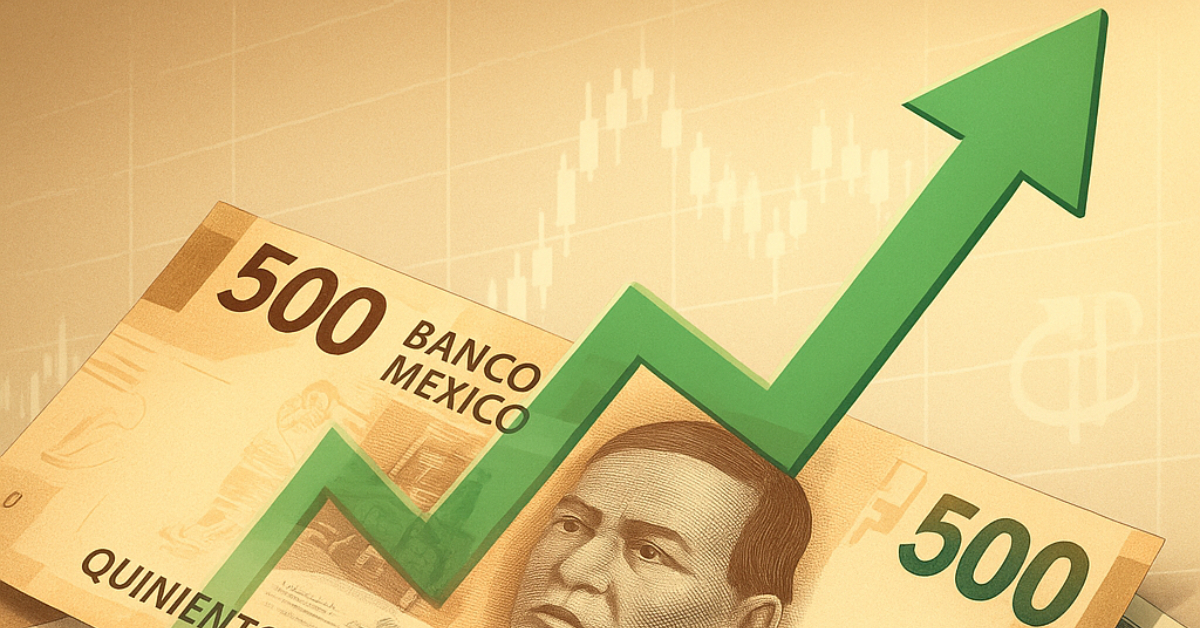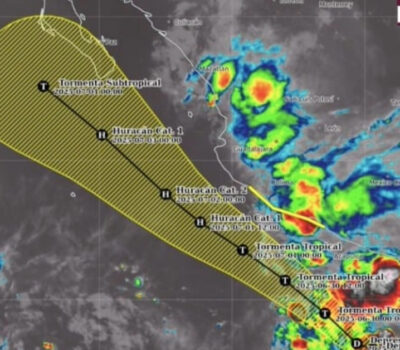The Mexican peso hit 18.82 per dollar on June 29, its strongest level in 10 months, supported by investor optimism over Fed rate cuts and U.S. economic policy shifts.
The Mexican peso is once again proving its resilience on the global financial stage. On Sunday, June 29, the currency strengthened to 18.82 pesos per U.S. dollar—its best performance since August of last year—according to data from Investing.com.
This rally comes despite the ongoing global trade tensions and continued uncertainty surrounding U.S. economic policy. The peso’s gains are being attributed to growing investor confidence that the U.S. Federal Reserve will lower interest rates by up to 75 basis points in 2025.
The Intercontinental Exchange’s Dollar Index (DXY), which tracks the performance of the U.S. dollar against a basket of six major currencies, edged up by 0.06% to reach 97.35 points. However, that modest rise did little to undermine the peso’s upward trajectory.
Investor Optimism Driving the Peso
Market analysts say the peso’s appreciation reflects investor optimism about future U.S. monetary policy, particularly the belief that the Fed may shift toward easing borrowing costs. That sentiment has been amplified by mounting pressure from former U.S. President Donald Trump, who has openly criticized Fed Chair Jerome Powell and called for aggressive rate cuts.
Trump has stated that he would be “delighted” if Powell were to resign, intensifying speculation around the Fed’s independence and its potential future course. According to experts, these political tensions are indirectly favoring emerging market currencies like the peso, which stand to benefit from any weakening in the U.S. dollar.
Impact of U.S. Tax Policy Revisions
Adding to the peso’s boost is the recent decision by the U.S. Senate to revise Trump’s controversial tax plan. The original proposal included a 3.5% tax on remittances sent outside the country, a measure that would have affected millions of Mexican families. The revised version now reduces the proposed tax rate to 1%, a move welcomed by both economists and immigrant advocates.
Although the new rate still poses concerns, the rollback from the initial figure has eased tensions in the financial markets and is seen as a win for stability, particularly in regions like Mexico that rely heavily on remittance flows.
A Ten-Month High Amid Global Uncertainty
The peso’s performance this week caps off a steady climb in recent months. Despite challenges—including the persistent trade conflict between the U.S. and several major economies such as the European Union, Canada, and China—the Mexican currency has held firm, accumulating gains that signal robust underlying investor confidence.
Economists caution, however, that the currency’s strength could face new challenges depending on how U.S. policy evolves in the coming months. Any abrupt moves by the Fed or renewed trade hostilities could quickly reverse the peso’s current momentum.
Broader Implications
The peso’s rise may have mixed implications for the Mexican economy. On the one hand, a stronger peso makes imports cheaper and can help curb inflation. On the other hand, it may reduce the competitiveness of Mexican exports, which could affect the country’s manufacturing and agricultural sectors.
Still, in the short term, the positive trend is being viewed as a signal of economic stability and investor trust in Mexico’s fiscal management, even amid global volatility.
As of Sunday morning, the peso’s 18.82 per dollar valuation represents a symbolic threshold, restoring levels last seen nearly a year ago and reinforcing its position as one of the world’s more stable emerging market currencies.
The Mexican peso hit 18.82 per dollar on June 29, its strongest level in 10 months, supported by investor optimism over . . .












